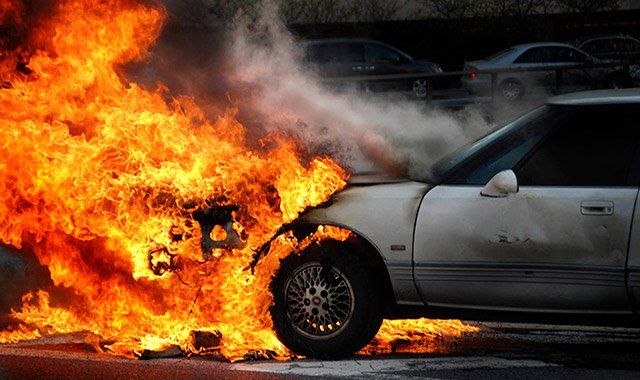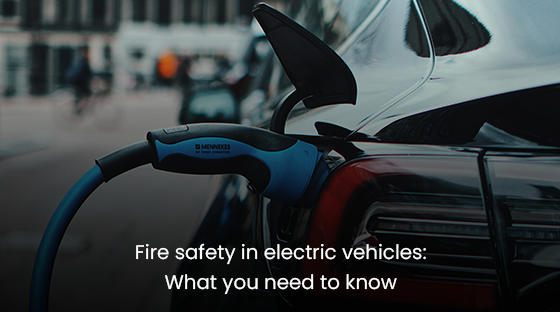Fire safety in electric vehicles: What you need to know
Hello people. This article is about fire safety in electric vehicles and what you need to know about it. It is a known fact that both conventional vehicles and the electric car catch fire in accidents.
How petrol/diesel car fire hazard happens?
A petrol car fire hazard happens by Vehicle accident, Electrical short-circuit, Engine overheating etc. In all these scenarios, the situation gets worst if fuel gets burned. Highly inflammable fossil fuel catches fire as soon as it exposed to high temperatures.
Are you looking to start your business in the electric vehicle industry? We provide software development, web application development, mobile application development, charging stations management app, electric vehicle fleet management software development, cyber security and all software services. Please check our home page here https://iwheels.co/

Ok. Let's get back to the article.
How electric car fire hazard happens?
Electrical related issues such as short-circuit are the reasons for an electric car fire.
The battery may catch fire when it is short-circuited. The most used electric car battery i.e., Lithium-ion battery is made up of packing many cells together. A short circuit of a cell generates more heat and adjacent cells get damaged. A thermal runaway happens in the battery if the spread of heat is not prevented.
A thermal runaway is the most common electric car fire incident. Sometimes it happens very slowly. More heat gets generated in cells due to the chemical reaction in electrolytes as a result of short-circuiting. It eventually leads to a fire hazard.
If the battery gets fired, it affects the whole vehicle and seems more dangerous than that of a petrol/diesel vehicle fire.

Fuel based cars vs Electric Cars in Fire Hazard
Petrol, diesel, and gas are highly inflammable fuels. They are being kept in the tank of a vehicle and mounted such that the impact is minimal when collides.
In opposition to fuel based cars, fire spreads out of electric car slowly. The car detects a potential chance of fire and lets the passengers get out of the car before it catches fire.
Sometimes it takes days to catch an EV fire after having short-circuit in battery. Thermal management and fault detection identify chances of fire.
Information to the passengers can help them to get out of the vehicle during a potential EV fire incident. Gasoline cars cannot have such protection since it’s so explosive.
A battery fire in an e-car has to be fought with a lot of water to cool down the storage cells. Because battery packs are mostly installed in the underbody and are well protected, the main task for the emergency services is to get the extinguishing water there quickly.
Fire Safety included in Electric Cars
Safety always matters to every individual. Electric Vehicle Car is protected from fire hazard using many methods as follows.
Thermal runaway and electric car battery fire should be prevented for safety.
Thermal management of electric car battery plays a role to prevent a fire hazard. It keeps the battery warm during winter.
The liquid cooling system in battery prevents the thermal runaway of adjacent cells up to an extent. Tesla uses a liquid cooling system and Nissan Leaf uses an air cooling system.
Fuses disconnect the battery when the sensors of the car detect even a remote chance of fire hazard due to collisions, short-circuit, etc.
A thermal separation between battery and passenger compartment is another feature that prevents the chances of spreading of an electric car fire.
How to prevent Electric Car fire
- Wear full PPE.
- Identify the type of vehicle involved
- Use a thermal imaging camera
- Establish an appropriate incident command structure
- Establish tactical priorities (fire, extrication, victim care)
- Stabilize the vehicle
- Power down, if possible
- Secure a large, continuous and sustainable water supply — one or more fire hydrants or multiple water tenders
- Use a large volume of water such as master stream, 2½-inch or multiple 1¾-inch fire lines to suppress and cool the fire and the battery
- Consider that this could be a combined fire, extrication and hazmat incident
- Have sufficient fire personnel and apparatus on scene for an extended operation to monitor the battery’s heat or possible re-ignition
- When turning the vehicle over to a wrecker or towing company, brief their personnel on the hazards
- If possible, follow the wrecker to the storage area, and place the battery-powered vehicle in a space away from other vehicles, buildings or combustibles
Hope this article on fire safety in electric vehicles and what you need to know is useful to you. To read about jobs in the Electric Vehicle Industry, please visit Job opportunities in Electric Vehicle Sector and its Charging Infrastructure industry




